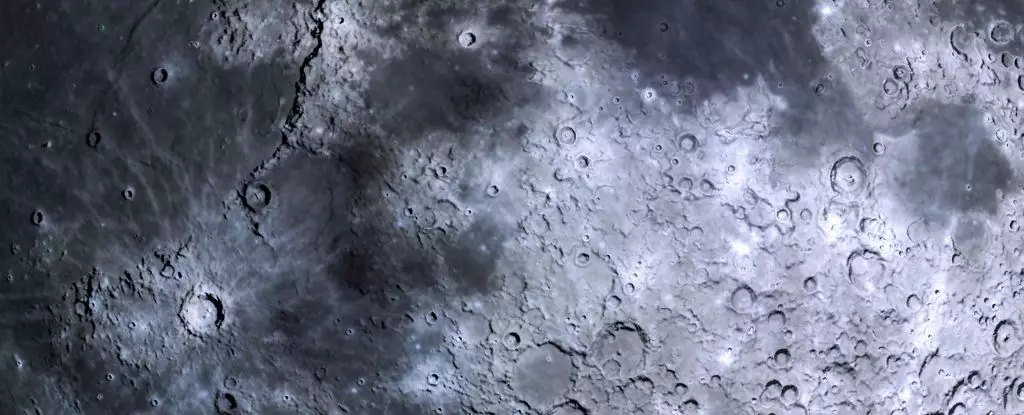The Moon, an everlasting companion to Earth, has long been perceived as a lifeless celestial body. However, fresh revelations challenge this notion by suggesting that its surface might not be as dormant as previously assumed. Recent research highlights geological activities that occurred much more recently than the established timeline of the Moon’s history, hinting at potential seismic activity reminiscent of our own planet’s. This could not only change our understanding of the Moon’s past but also its present and future dynamics.
Astronomers from the University of Maryland have embarked on a pioneering journey to explore the far side of the Moon, uncovering a surprising number of 266 previously uncharted ridges that showcase recent geological activity. The term “dark side” refers to this area of the Moon, which remains invisible from Earth due to synchronous rotation. When viewed through advanced mapping and modeling techniques, these ridges appear to contradict the long-held belief that the Moon’s geological events largely ceased billions of years ago. The study reveals that some of these geological formations formed a mere 14 million years ago, showcasing a dynamic history that is both compelling and perplexing.
The Moon is estimated to be around 4.5 billion years old, a staggering figure that makes the last 14 million years feel almost like a blink of an eye. In the Moon’s early existence, an ocean of molten magma sculpted its surface, presenting an entirely different reality than what we witness today. As time progressed, the Moon’s surface transitioned to a cooler, more stable state, where significant volcanic activity reportedly dwindled. Over the last several billion years, the Moon’s surface has largely experienced little change, marked by enduring lava formations known as lunar maria.
However, this new evidence cast doubts on the notion of a completely inactive lunar surface. Geologist Jaclyn Clark emphasizes that the assumption most geological activities occurred between 2.5 to 3 billion years ago may not encapsulate the full picture. The newly found ridges, especially those appearing around existing lunar maria, could indicate recent tectonic movements that accompany ongoing geological transformations. The presence of these ridges suggests that the Moon’s surface may still be subject to tectonic shifts, a notion that has significant implications for our understanding of the Moon’s geological vitality.
The newly discovered ridges intrigue not just because of their timing, but also due to their relationship to the Moon’s impact craters. Clark and her team recount that the Moon’s far side endured more impacts, leading to a lower visible count of features when compared to the near side. Scientists had historically suggested that this side, while receiving more hits, also cooled at a faster rate, thus hardening more rapidly. The discovery of ridges crossing these young craters, which emerged just 14 million years ago, challenges this established narrative. The implications are profound; they suggest continual geological processes at work, introducing a dynamic element to the Moon that was previously overlooked.
While the research into the Moon’s geological activity is still in its infancy, the results challenge existing paradigms and encourage further exploration. The notion that the Moon is, in fact, experiencing ongoing geological processes raises questions about not just our planet’s neighbor but potentially other celestial bodies in our solar system. The findings may catalyze renewed interest in lunar studies and extraterrestrial geology as a whole.
The Moon, long believed to be a cold and still remnant of our solar system’s history, is gradually revealing itself to be more dynamic than previously thought. The recent findings by geologists signal a new era of interest in lunar exploration, as scientists seek to unravel the mysteries that lie beneath the surface. Perhaps our celestial companion is still alive in ways we are only beginning to comprehend.


Leave a Reply